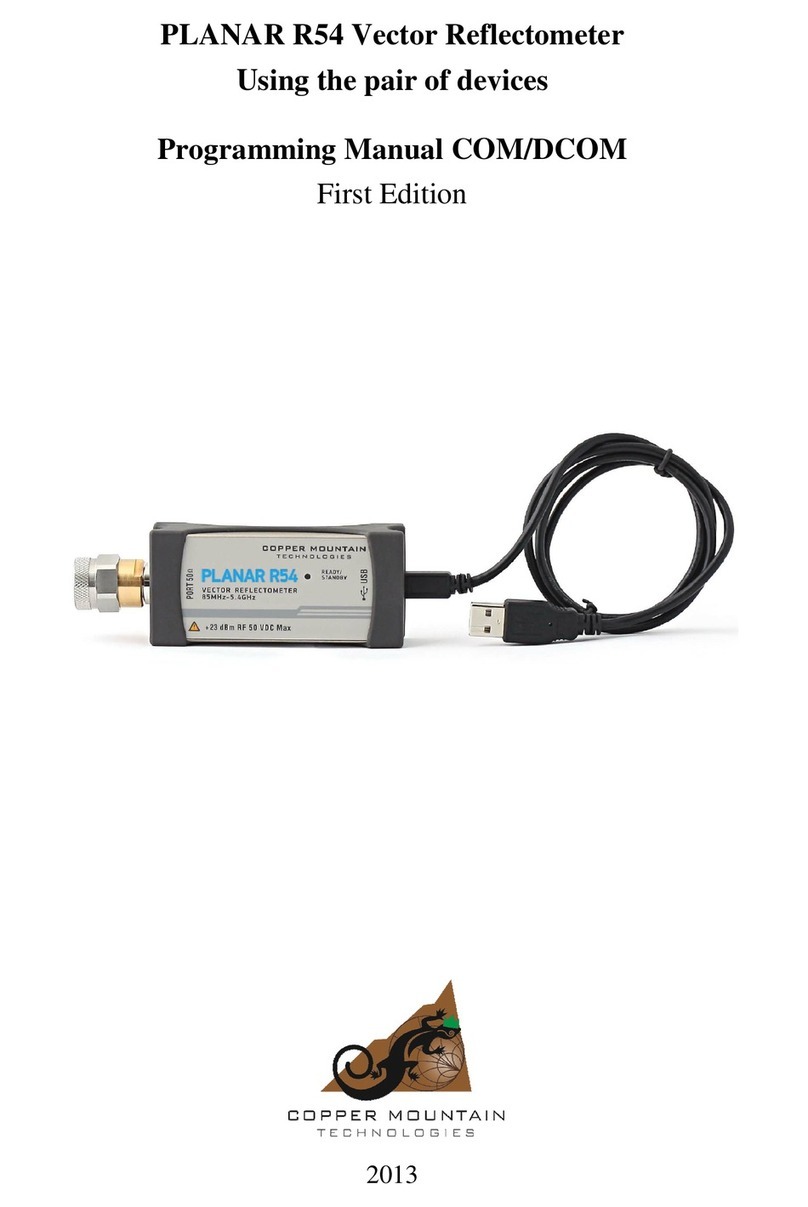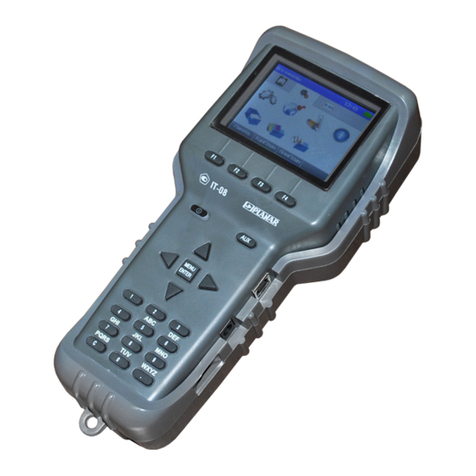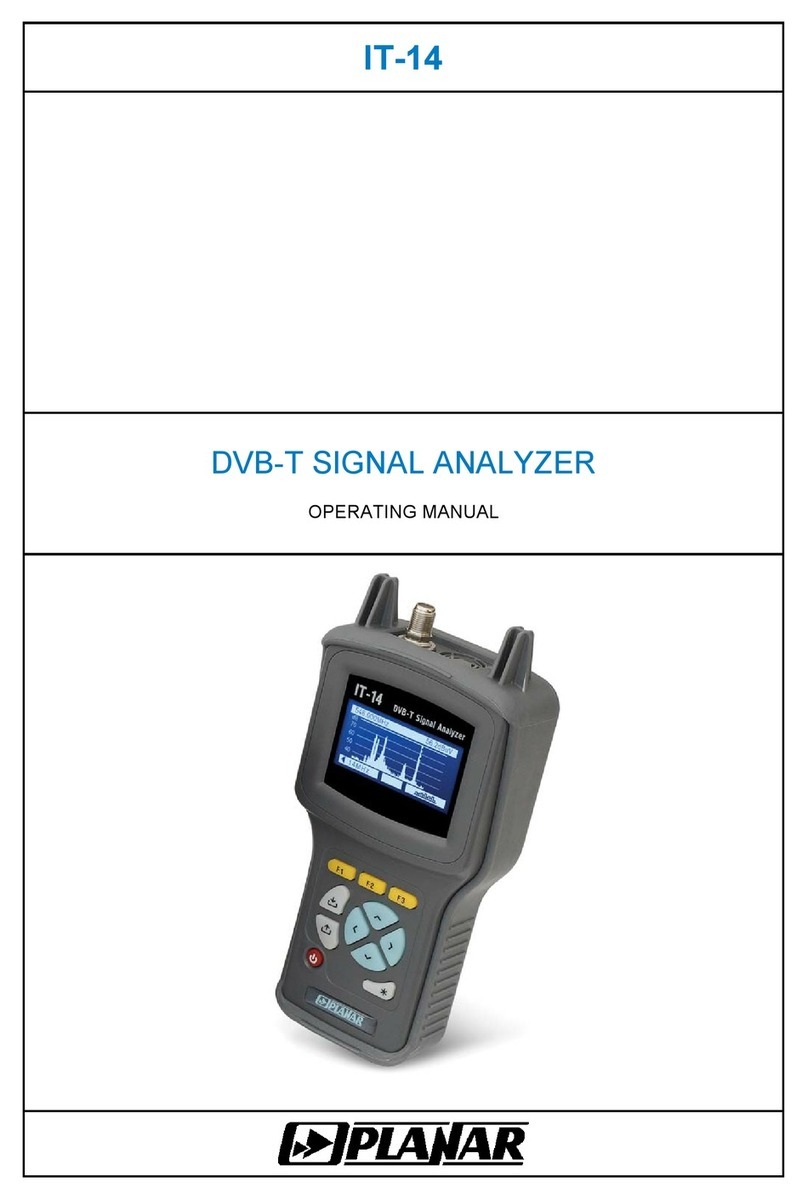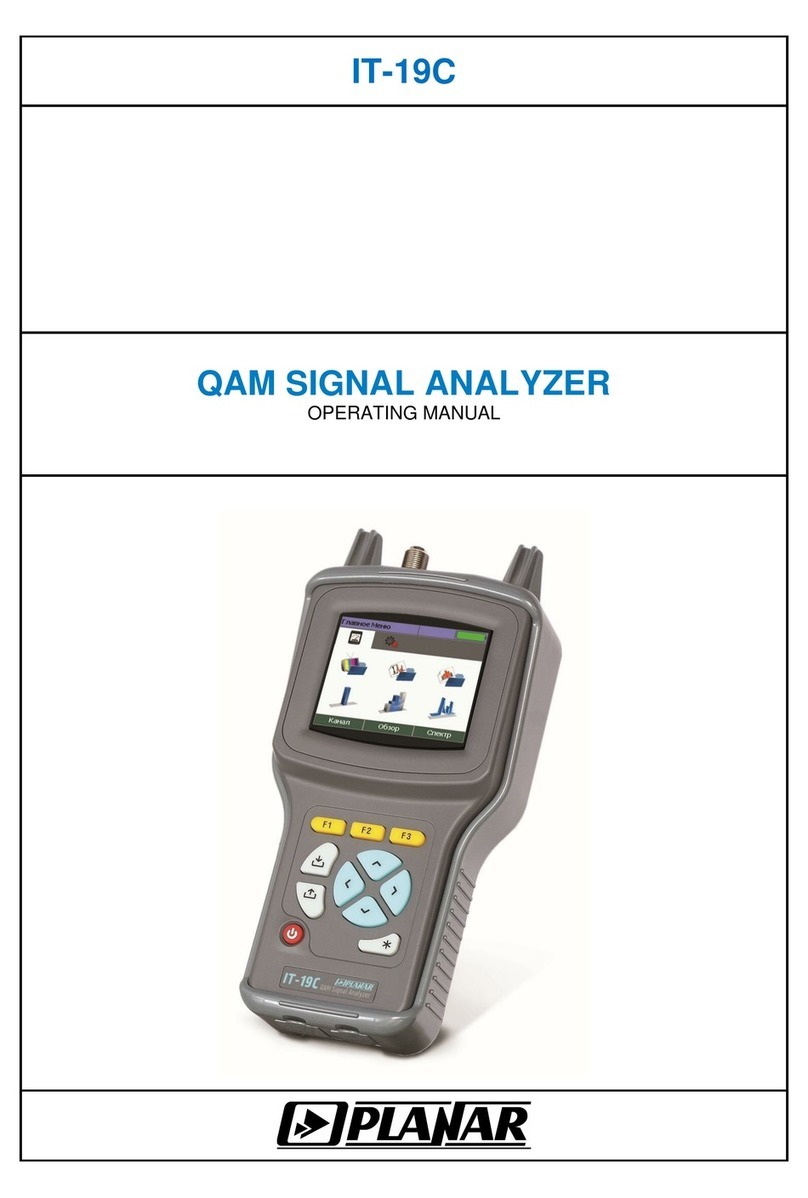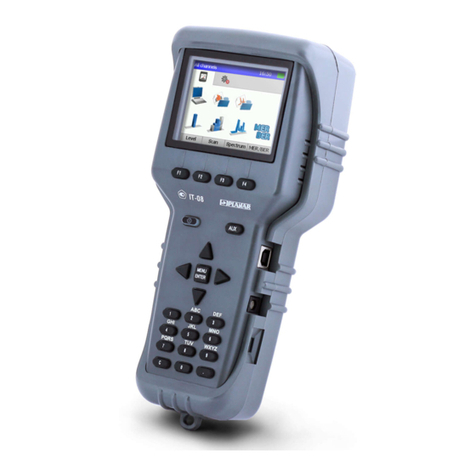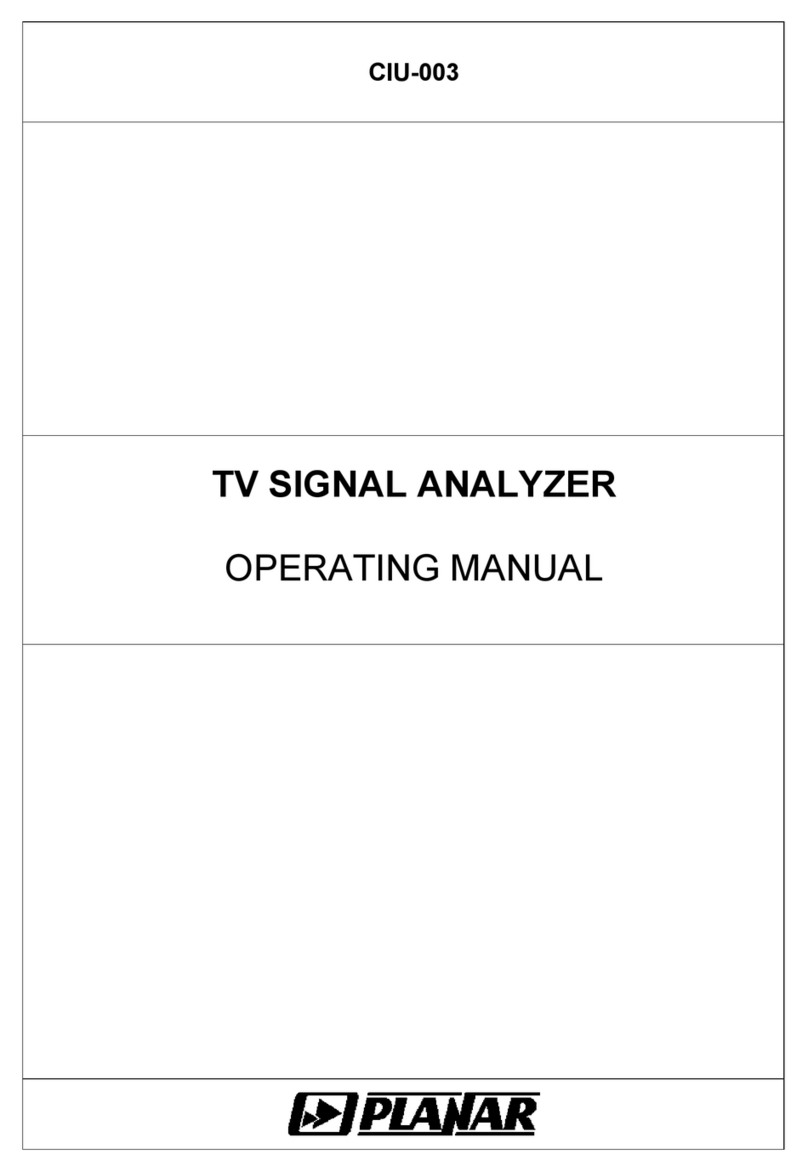
Minimal channel power for quasi-error-free decoding:............................................ 50 dBμV.
2.4.4. DVB-T signal parameters measurement
Operating frequency range: .........................................................................42 to 1002 MHz;
Power measurement range: ......................................................................... 35 to 115 dBμV;
Power measurement accuracy (C/N>20 dB): ...........................................................±1.2 dB;
Modulation type: .............................................................................QPSK, QAM16, QAM64;
MER measurement range:................................................................................. 14 to 35 dB;
MER measurement accuracy:...................................................................................±2.0 dB;
MER measurement resolution: .................................................................................. 0.1 dB;
BER measurement resolution: ..............................................................1.0x10-2 to 1.0x10-10;
Minimal channel power for quasi-error-free decoding:............................................ 45 dBμV.
2.4.5. DVB-T2 signal parameters measurement
Operating frequency range: .........................................................................42 to 1002 MHz;
Power measurement range: ......................................................................... 35 to 115 dBμV;
Power measurement accuracy (C/N>20 dB): ...........................................................±1.2 dB;
DVB-T2 standard: .........................................................................................................1.3.1;
Modulation type: .............................................................QPSK, QAM16, QAM64, QAM256;
MER measurement range:..................................................................................22 to 35 dB;
MER measurement accuracy:...................................................................................±2.0 dB;
MER measurement resolution: .................................................................................. 0.1 dB;
BER measurement resolution: ..............................................................1.0x10-2 to 1.0x10-10;
Minimal channel power for quasi-error-free decoding:............................................ 45 dBμV.
2.4.6. DVB-S/S2 signal parameters measurement
Operating frequency range: .......................................................................950 to 2150 MHz;
Power measurement range: ......................................................................... 45 to 115 dBμV;
Power measurement accuracy (C/N>20 dB): ...........................................................±1.2 dB;
Modulation type: ...............................................................QPSK, 8PSK, 16APSK, 32APSK;
Symbol rate:..................................................................................................... 1 to 45 Msps;
DiSEqC standards: ....................................................................... 1.0, 1.1, 1.2, 2.0, 2.1, 2.2;
«Single Cable Routing» standard: ........................................................................ EN 50494;
MER measurement range:..................................................................................14 to 25 dB;
MER measurement accuracy:...................................................................................±2.0 dB;
MER measurement resolution: .................................................................................. 0.1 dB;
BER measurement resolution: ............................................................... 1.0x10-2 to 1.0x10-9;
Minimal channel power for quasi-error-free decoding:............................................ 45 dBμV.
2.4.7. IPTV signal parameters measurement
Transport protocol:............................................................................................... UDP, RTP;
IP routing type:......................................................................... unicast, multicast (IGMP v2);
TS bitrate: ............................................................................................................... 70 Mbps.
2.4.8. Optical input parameters
Operating wavelength range:..................................................................... 1100 to 1650 nm;
Power measurement range: ........................................................................... -20 to +8 dBm;
Operating power level range of optical receiver:.............................................. -9 to +2 dBm;
0 dBm optical power measurement accuracy: ......................................................... ±0.5 dB;
Optical power measurement resolution:.................................................................... 0.1 dB;
Calibration wavelengths of power meter:...................................................... 1310, 1550 nm.
2.4.9. TV video and sound analysis parameters
Video codecs: ................H.264/AVC L4.1 HP, MPEG-2 MP@HL, VC-1 AP L3, AVS PL 6.0;
9












